I’ve always been fascinated by fossils. While Hal was dreaming about dinosaurs and playing Indiana Jones as a child, I was more into the little guys, especially the trilobites. So when I learned this year that the biggest trilobite in the world was on display at The Manitoba Museum in Winnipeg I knew we had to make a stop on our American Safari.
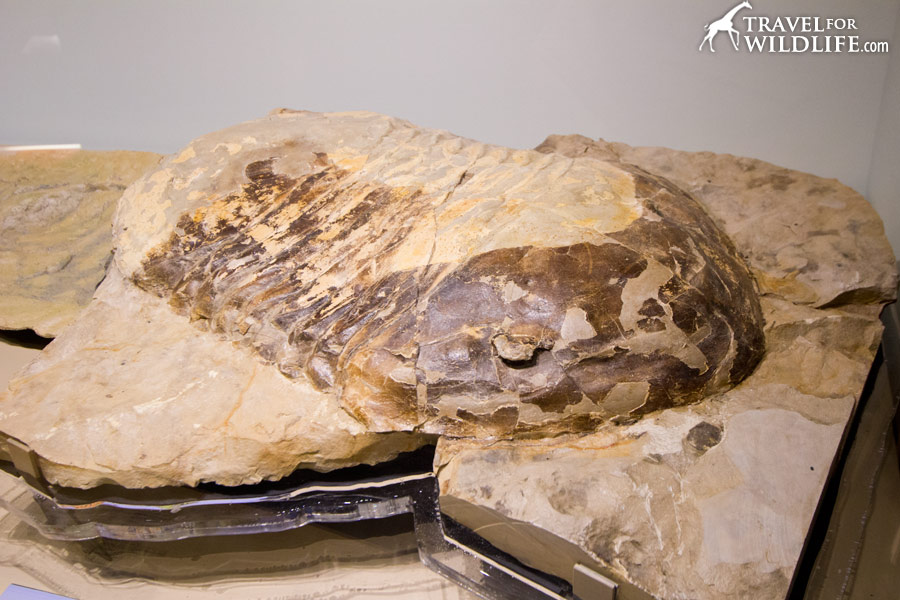
What Is a Trilobite?
These sea-dwelling creatures roamed Earth millions of years ago, well before dinosaurs. They were marine arthropods (joint-legged animals), related to today’s scorpions and crabs. In fact, the horseshoe crab is probably the closest of its modern relatives. Some trilobites moved around the sea bed and some swam. Some were predators and some were filter feeders.
Trilobites lived in diverse habitats surrounded by big predators and therefore developed a wide variety of defense mechanisms. Some of them had retractable antennae, some developed sophisticated eyes (several trilobite species had compound eyes with over 15,000 lenses!), and some even produced protective spines like a cactus.
Trilobites were some of Earth’s most successful and diverse creatures for 300 million years, until they vanished in the Permian-Triassic Extinction some 250 million years ago.
The Biggest Trilobite in the World
Before arriving in Winnipeg I had no idea how big this trilobite was. Or if it had those huge compound eyes like a dragon fly. I was kind of hoping so as they are my favorite. And perhaps some spines. The more extravagant the better. I wasn’t disappointed when it didn’t have either. Because it was BIG. The biggest trilobite in the world is an Isotelus rex, and is almost twice as big as the next largest specimen ever found. It is over 27 inches long and 455 million years old . If we were living in the Ordovician period we would find these creatures while scuba diving. I can’t even imagine!
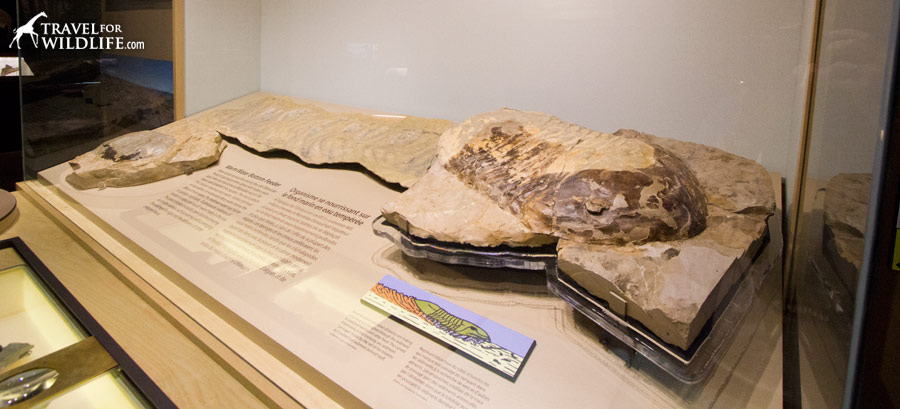
This particular individual was discovered in Churchill, the same place in northern Manitoba where we were heading next to swim with beluga whales and search for polar bears. During the Ordovician, Manitoba was in the tropics and submerged in a warm sea where Isotelus rex reigned. It was a sea where sponges and coral thrived. Isotelus lived in moderately deep water, beneath the effect of the waves. It probably spent its time predating on worms and scavenging on the sea floor. The fossil found in The Manitoba Museum comes complete with its own fossilized tracks across the sea floor.
I am so into trilobites that when Hal proposed to me, he designed the engagement ring to include a tiny trilobite. He found a trilobite, an Elrathia Kingii, small enough that would fit nicely in a ring. It is only 0.02 inches! Now compare it with the 27 inches of Isotelus Rex. My ring-fossil lived during the Middle Cambrian (around 500 million years ago) and was found in Utah.
Here is a photo comparing both trilobites. It is like comparing a chihuahua with a wolf.
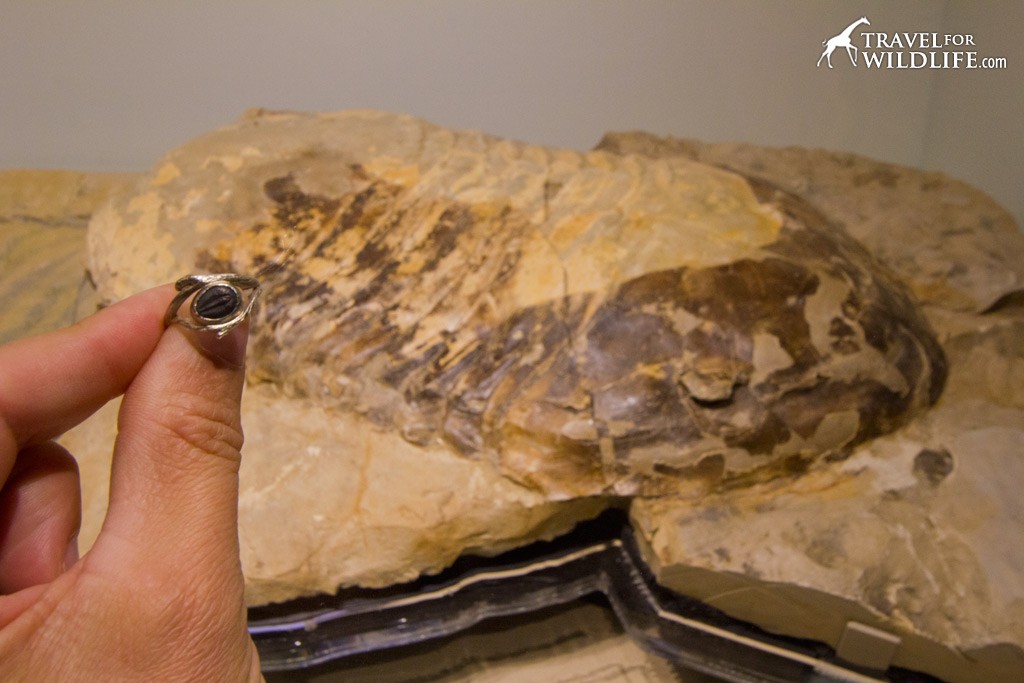
If you visit The Manitoba Museum you’ll find other cool fossils like the jellyfish in the photo below. It is unusual to find a jellyfish fossil as soft-bodied creatures like this one rarely survive the fossilization process. Only if they were buried in very fine sediment could such a fragile creature leave their imprint. So seeing this one was a huge treat!

If you’d like to imagine what it was like to sit at the bottom of the living sea in prehistoric Manitoba, then you are in for a big treat. Stepping into the museum’s Ancient Seas room is like nothing I’ve ever seen. This cinema-like space features a three-screen animation that takes you right to the bottom of the ocean, in an aquarium-like experience.
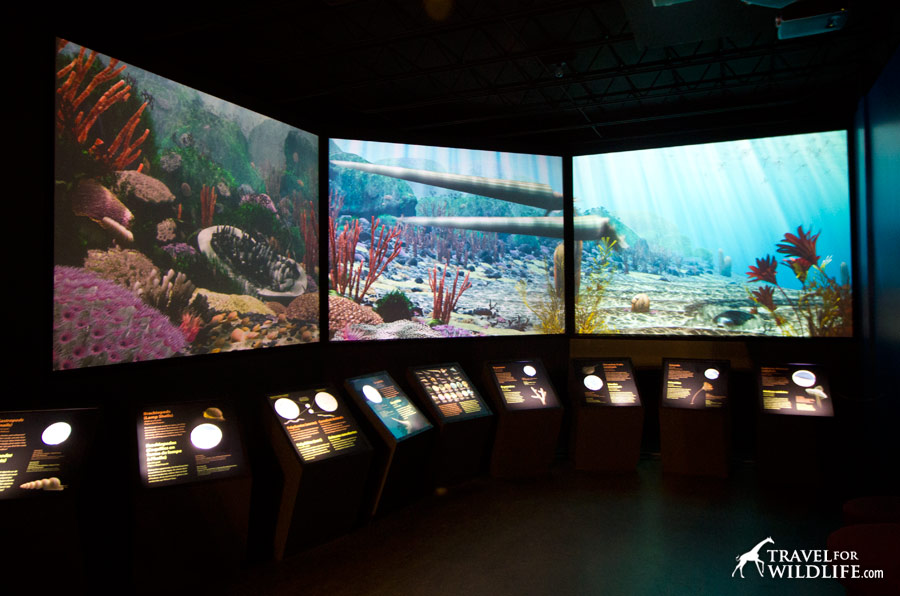
These three 8-foot screens depict what sea life was like 450 million years in tropical Manitoba. See giant trilobites crawl, eurypterids (sea scorpions) swim and giant cephalopods hunt. The experience of watching the Ancient Seas is mesmerizing.
I had high expectations of finally seeing the largest trilobite in the world, but when I saw Ancient Seas I was amazed.
What else to do in Winnipeg? Take a look at our Wildlife Weekend in Winnipeg for some inspiration.
Disclosure: A tour of the museum was provided by Tourism Winnipeg, but the opinions expressed in this article are entirely our own.

Cristina Garcia
Zoologist and wildlife photographer. She has worked in the field with jackals, wolves, cheetahs, & leopards. She serves on the Board of Directors of SEE Turtles, a non-profit sea turtle conservation organization.
Read her posts at Travel For Wildlife and see more of her work at Truly Wild, & Our Wild Yard.

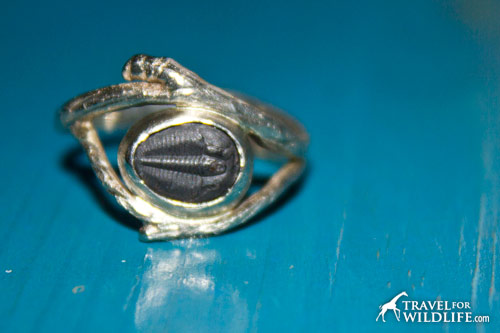
Jake
Saturday 26th of March 2022
Hello guys. I’m an avid outdoor explorer out in the Sonoran desert and recently found something that looks like a trilobite and is 6ft long. It would be cool for someone that knows what they are looking at to Email me at macmeeze@gmail.com I’d hate for it to be a good discovery and it be lost to time thank you.
Joao Silva
Saturday 5th of March 2016
Hi, my name is John, I'm a Portuguese Architect that always loved trilobites. A few years ago I went to Arouca, a small village at North of Portugal, as the same latitude as Porto city (the second largest in Portugal, after Lisbon), I was amazed by the size of the trilobites that were found there, above 34 inches long. So I believe that theses ones are in fact the biggest in the world, please have a look to the link below. Best regards. http://www.publico.pt/ciencia/noticia/os-fosseis-das-maiores-trilobites-do-mundo-foram-encontrados-em-portugal-1379486
Ricardo Fernandes
Tuesday 19th of June 2018
Hello,
The biggest trilobite in the world can indeed be found in Arouca (northern Portugal). There is a documentary available online produced by the Portuguese public TV broadcaster (RTP) about the specimen and the site where it was found. You can check it out here: https://www.rtp.pt/play/p4530/e351579/visita-guiada
Unfortunately, it's only available in Portuguese but you can see the biggest trilobite in the world 16minutes into the documentary.
Cheers, Ricardo
Hal Brindley
Monday 7th of March 2016
Hi Joao!
That is remarkable! I wonder why it didn't really made the news! I cannot find anything else aside the article you sent.
Mary @ Green Global Travel
Friday 22nd of November 2013
The Manitoba Museum looks amazing! I love the animation screens that attempt to give viewers insight into life during trilobite times! Mesmerizing is the perfect word to describe having the opportunity to observe 450 million year old marine life!